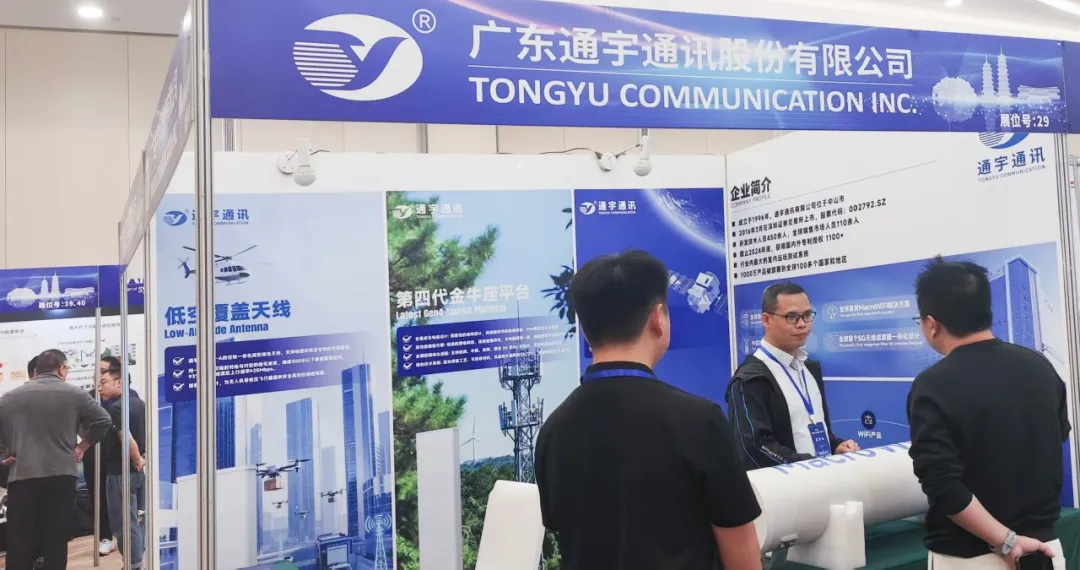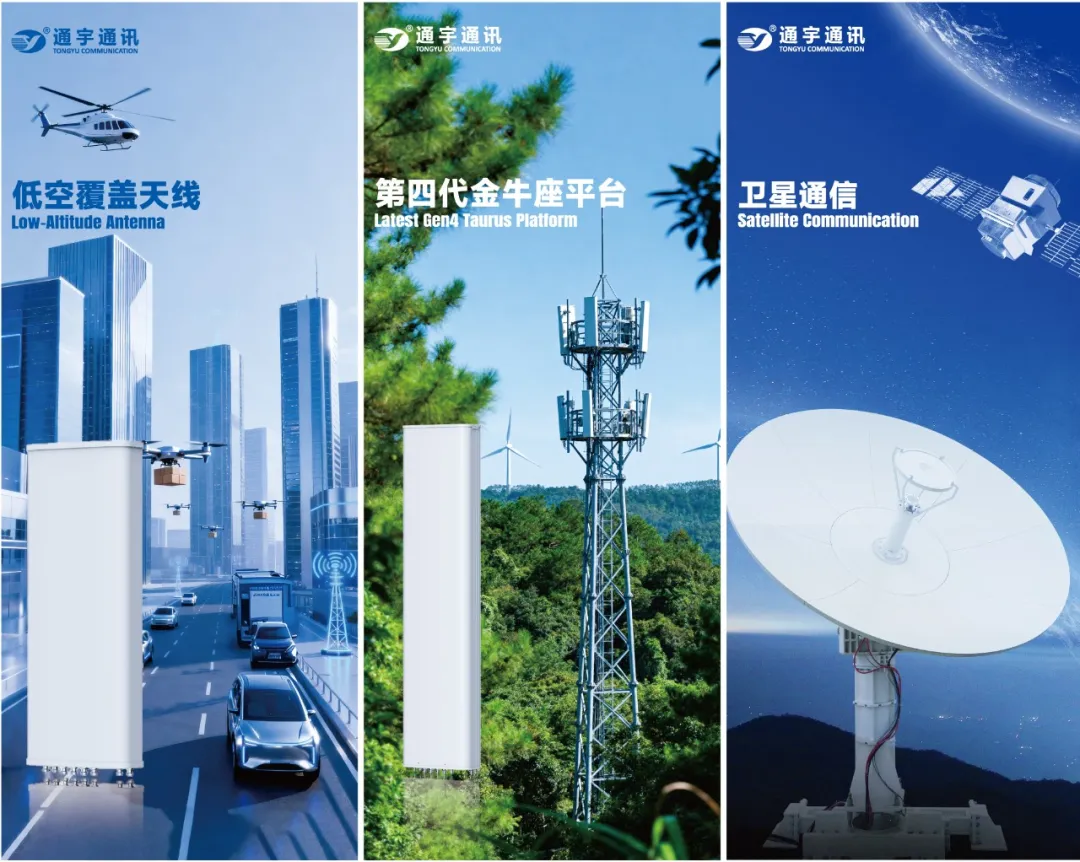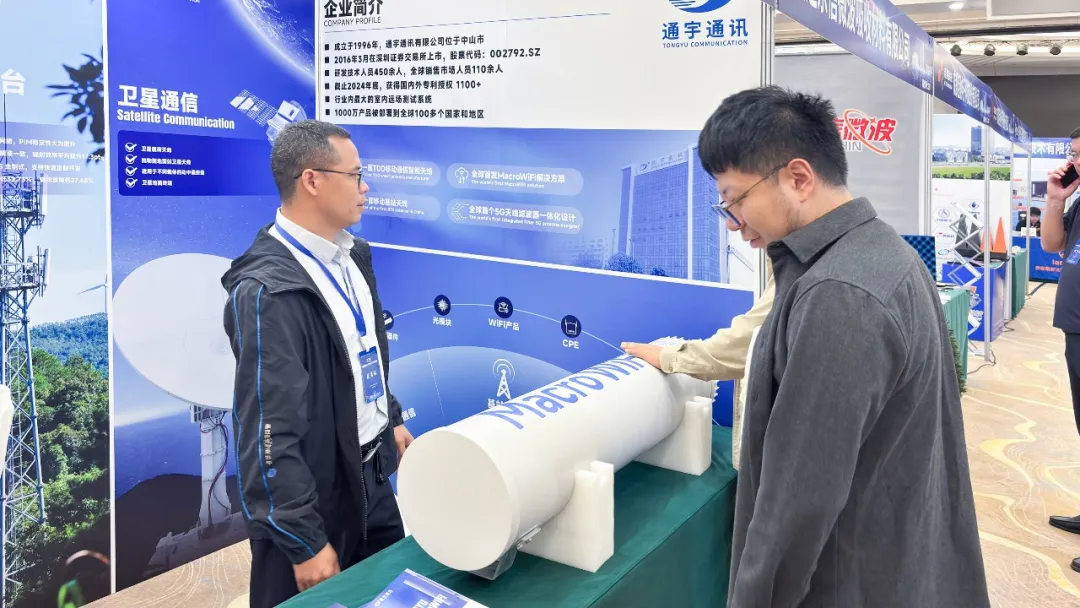The 2025 China Institute of Electronics Annual Conference on Antennas convened in Guilin from October 19 to 22. As one of the most influential academic conferences in China's antenna field, this premier event brought together top scholars, seasoned researchers, and core technical teams from the industry. It served as a vital platform for exchanging innovative ideas, sharing cutting-edge academic achievements, and exploring directions for technological breakthroughs.
Tongyu Communications was invited to participate in this conference, bringing not only years of technical expertise and practical experience cultivated in the communications field, but also engaging as a “technology co-creator.” The company deeply immersed itself in the industry exchange, collaborating with peers to explore new application pathways for antenna technology in 6G, satellite communications, and low-altitude internet connectivity.

At the annual conference venue, Tongyu Communications provided in-depth explanations of multiple core technology solutions at its exhibition booth. Addressing the industry's current focus on low-altitude connectivity needs, the team highlighted its next-generation low-altitude coverage antenna solution specifically developed for this scenario. Based on the 5G-A air-ground integrated communication architecture, this solution offers core advantages including multi-band compatibility, wide-area coverage, and strong anti-interference capabilities. It effectively resolves communication stability challenges in applications such as drone inspections, low-altitude logistics, and emergency rescue operations.

Meanwhile, the technical team provided a detailed overview of the technological breakthroughs in the fourth-generation Taurus antenna platform, which is undergoing upgrades and iterations. Compared to its predecessor, this platform will achieve optimizations across three key dimensions: signal gain, beamforming precision, and energy consumption control. It will better accommodate diverse application scenarios such as operator network upgrades and industrial internet, delivering customized solutions with enhanced cost-effectiveness for industry clients.

Additionally, Tongyu Communications showcased its innovative MacroWiFi solution—a fusion of WiFi and satellite communication technologies—at the event. This product employs a proprietary technical approach to establish a link channel between satellite networks and terrestrial communications, enabling seamless interconnection with satellite systems like Starlink. In terms of coverage capability, MacroWiFi employs a high-gain dual-beam antenna array with a 180° wide-angle design, enabling ultra-long-range transmission of 1.5-2.8 kilometers. Its coverage area is 10 times that of traditional WiFi. By networking multiple devices, it can meet the signal demands of multiple farms and village settlements. For deployment and operation, it requires no complex cabling and can be installed in 1-2 days per unit. Construction and maintenance costs are significantly lower than traditional cellular networks. It supports over 200 concurrent users and, when paired with a cloud management platform, enables remote monitoring and precise billing.

As a leading enterprise in the field of communication antennas, Tongyu Communications has always regarded technological innovation as its core driving force. This conference participation not only serves as a comprehensive showcase of the company's technical capabilities but also presents a crucial opportunity to collaborate with industry peers in advancing technological progress and jointly planning industrial development. Moving forward, Tongyu Communications will continue to focus on cutting-edge fields such as 5G-A, satellite communications, and low-altitude connectivity. The company will increase R&D investment, overcome key technological bottlenecks, and continuously introduce innovative products and solutions that better meet market demands. By collaborating with partners across the industrial chain, Tongyu will jointly advance the high-quality development of China's antenna technology industry, contributing to the construction of smarter, more efficient communication networks.

